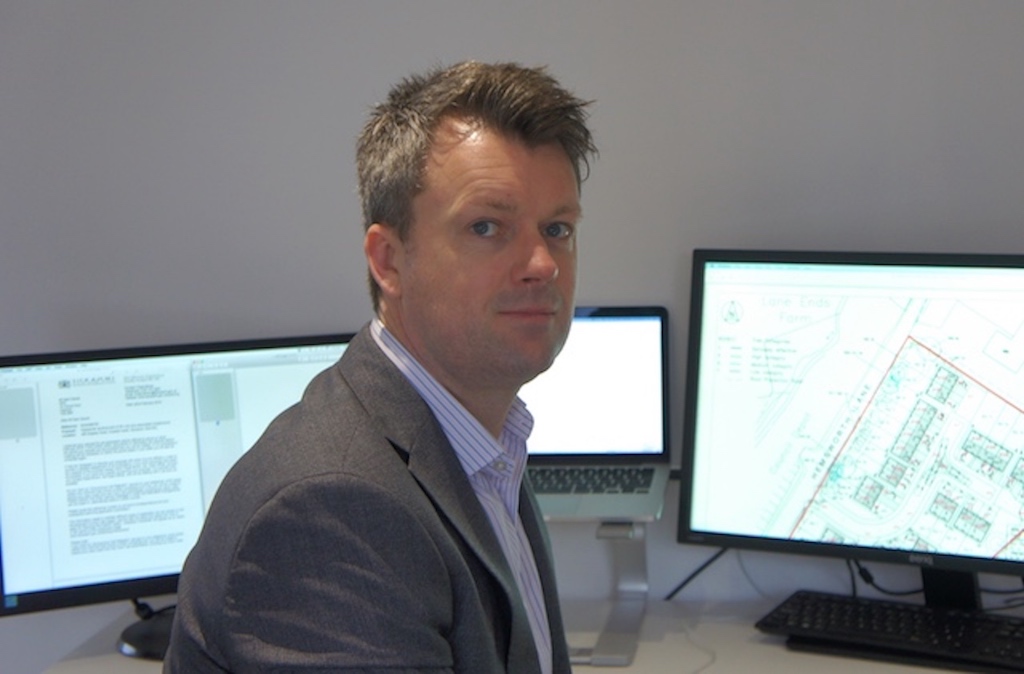
Good design is critical to effective planning, says Sam Dewar, director of planning consultancy and project management specialists DPA Planning, who considers the key to success is to create places where people what to come to live and build a home.
We have all felt the presence, almost primeval appeal, of good design: well thought out, carefully crafted housing developments that are cleverly designed can be empowering, making us feel safe, secure and at home. And this extends to the wider environment and infrastructure, which surrounds and envelops all of us – from the fundamental layout of streets and pavements to the provision of useful local facilities and community services.
On the face of it, it may seem a simple formula, but it’s surprising how easy it is to get this wrong. In balancing the demands of design and planning, I would argue that more thought needs to be given to the type of buildings and urban spaces that we want to create. More thought needs to be given to the people that will live in our houses, and how they will interact with space to create a home.
Those involved in property development need to be far more robust in answering some fundamentals if we are to deliver better housing schemes. Who is this development for? Who will want to live here? And why will they want to come here?’ At the start of the whole process, far more needs to be invested in thinking long and hard about what should be built and why?
Good, effective design in planning can generate increased value throughout the property development process, differentiating the perfunctory from the outstanding. In simple fiscal terms, it can help to deliver more value and return on investment for developers and builders struggling in a competitive sector. It doesn’t have to cost more as ‘affordable quality’ can be secured through thinking differently, or by adopting a more radical approach problem solving.
So what constitutes good design within the planning process? It can start inside the home with efficient, well thought through spatial arrangements. Generous and effective utilisation of space is important. Rooms should be sized appropriately for their function and be flexible and adaptable for their use over the lifetime of the property, such as open plan arrangements for multi-functional activity that takes account of modern lifestyles. Think about storage – many households will stay put in their homes for longer than might have been the case in previous generations.
The health and wellbeing of home owners can be enriched by the internal environment, so flooding spaces with natural sunlight will contribute to well being, while designing in good air quality and ventilation will also help (energy efficient build minimises the running costs, improves affordability and minimises carbon emissions). Thinking about how homes can be deigned better to ensure they meet changing future needs is also paramount, creating homes that are hopefully more resilient to changing tastes, mores and the ravages of time. Similarly, good housing needs to incorporate design elements, which make properties more adaptable to warmer winters and wetter summers in the face of climate change.
Schemes that are getting the design/planning balance right feature a mix of factors but it’s also important to consider creating a ‘buzz’ about a place. For example, the recent development that DPA Planning was involved in at Pudsey Road in Leeds for nine dwellings reflects a good use of space in an otherwise constrained site. Often smaller sites can create a better use of space with appropriate garden sizes and sufficient internal amenity space.
This and other schemes transcend other development in my view because they feature an element of what is euphemistically called ‘place making’ throughout the design and planning stages. Effective place making has to be in built from the outset – it can’t be ‘created’ once a scheme is completed – and must be considered as part of a wider community consultation process, contributing to occupants’ long-term happiness and security.
Developers can undoubtedly facilitate better design through improved engagement with the customer and wider communities, but working collaboratively to test new technologies and techniques to improve build quality, while finding different ways of working, that involve a wider range of stakeholders and skills earlier on, also plays a part.
Government and by implication, local authorities, need to continually press to raise construction standards as they balance the demands of quality and long term sustainability with speed and expediency of housing delivery within the planning system. I would also like to see more pursuance of a diverse housing stock through the encouragement of alternative developers, including small builders and those involved in community and custom build projects.
It’s clear that we all need to think about the long-term legacy for those who will live in the houses we build if we are to deliver better homes. Improved engagement with the customer, whether the homes are for sale or rent, will help, as will greater collaboration across the industry’s professional sectors and trade bodies. We must not overlook the great strides that have been achieved in recent decades in good design as part of the planning process too.
However, in the clamour to build the quantity and quality of new homes that the country desperately needs – 300,000 units per year – it remains as important as ever to continually strive improve, innovate, and think beyond the traditional and conventional.
And this could involve more development of hitherto ‘untouchable’ Green Belt land as the opportunities to build on brownfield sites begin to dry up. A radically different policy that’s properly thought through and executed, could be an attractive proposition. It’s certainly a bold agenda but sitting alongside a more forward-looking vision from local authorities, it’s one I believe can deliver real change.
